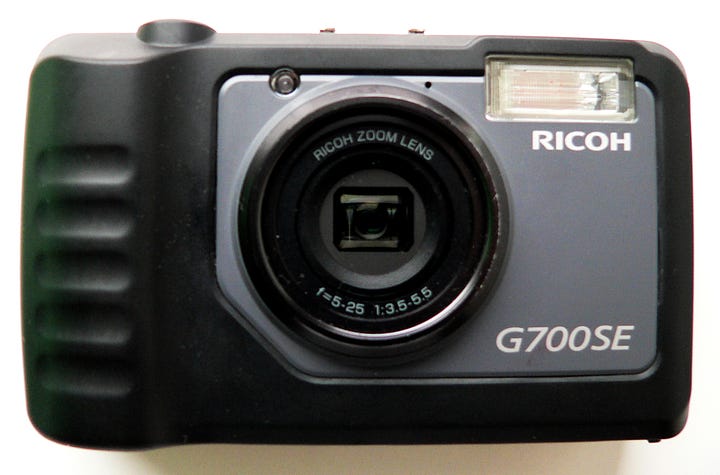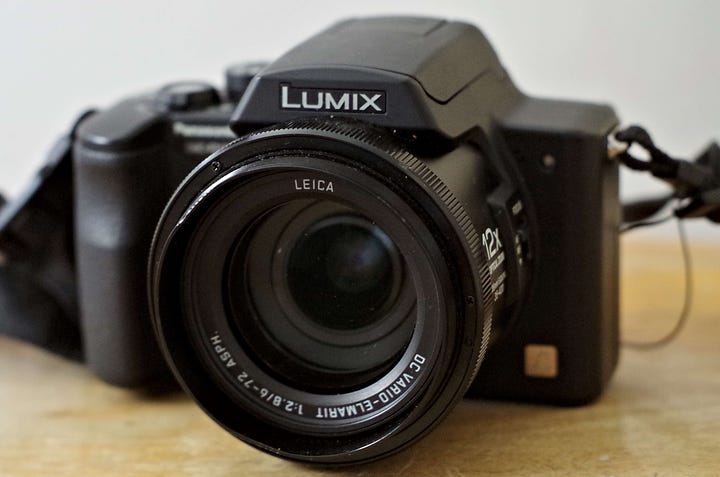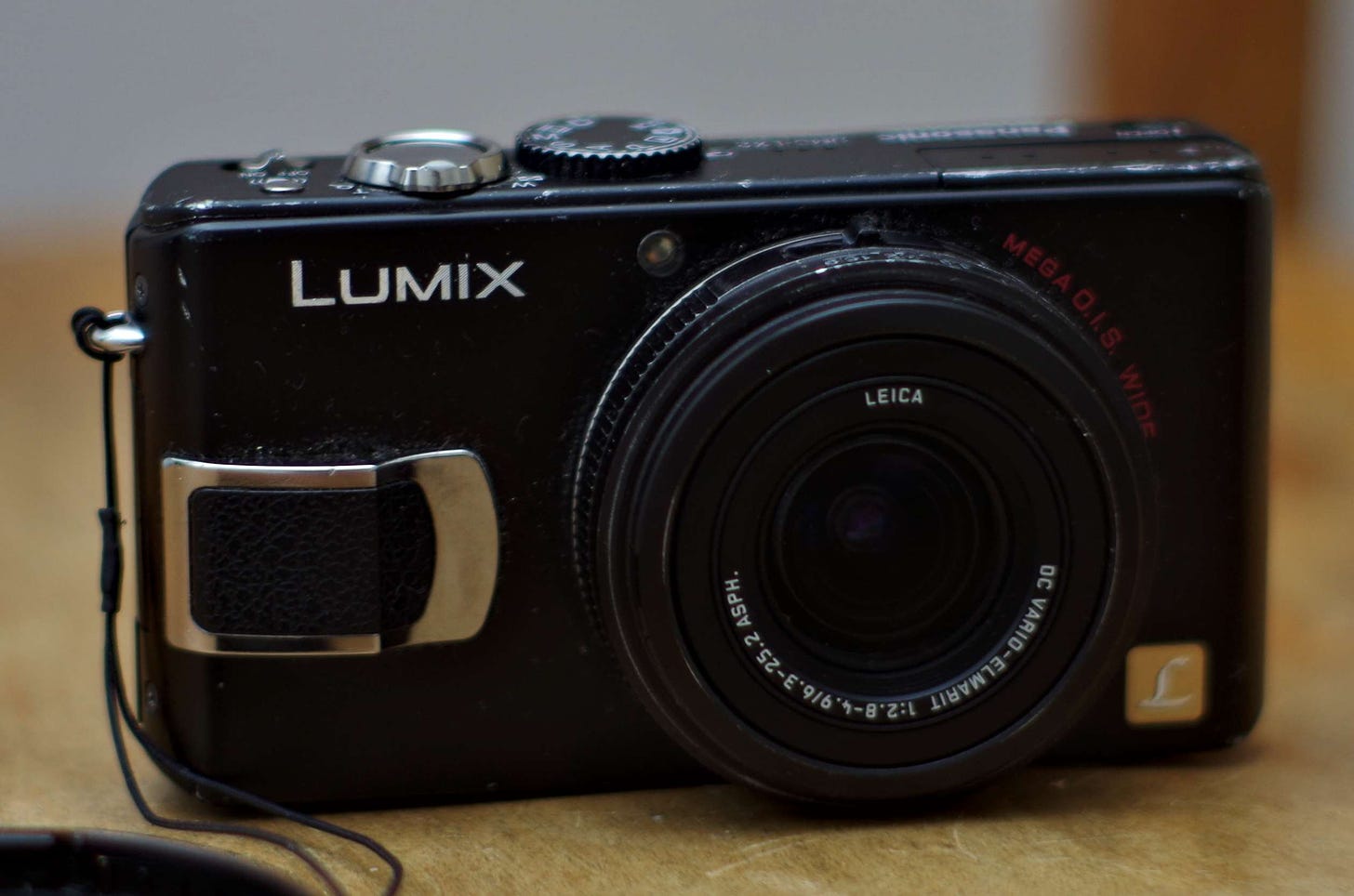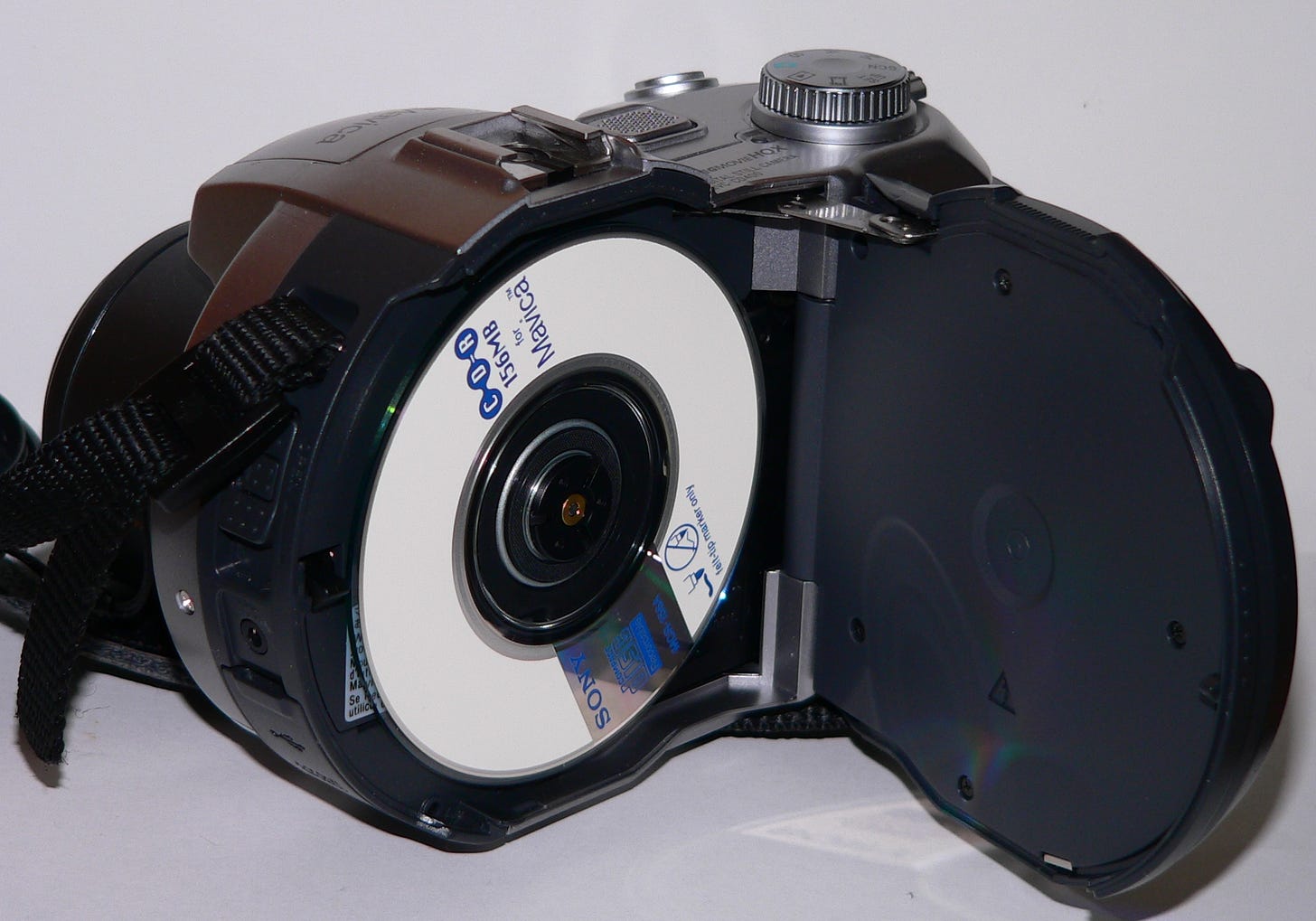Camera Crazy: 10 Tips for Buying a Digicam
Here's a guide to buying old compact digital cameras.
As I’ve been snapping up too many old compact digital cameras in recent years, I’ve learned a few lessons I wanted to share with others. Here are my Top 10 tips for buying an old point-and-shoot digicam.
Tip No. 1 for buying an old camera: Never fall for the “I’m selling this camera as-is, because I never tested it” trick.
I’ve bought several cameras like this and most did not work. I was foolish. Few reasons exist for someone to not try a camera out to make sure it works before selling it. I believe the main reason is these sellers know they can get more if the buyer believes a camera might actually work but that the seller is too ignorant to know this. They see it as a gamble and will risk a higher bid. I think the sellers usually know what they are doing. Or they are sloppy. Both are not good.
Third-party batteries are cheap enough to buy nowadays and so are chargers, so really the seller, in my view, should make sure first. If the camera arrives broken, most likely, you won’t be able to get it repaired. Instead of getting a bargain, you’ll get someone’s garbage.
Now, here’s the exception. If the seller tells you specifically what is wrong with the device and you think you can fix it. For example, the battery door is broken off and you think you can tape it together. Or, if you need a part — say a new battery compartment door — and you know this broken camera has that part in tact. (Still, beware, I tried this recently, and, true, the battery door was broken on an old camera, but even after that was fixed, it still didn’t work.) All this holds true for old film cameras, by the way, which might have deteriorated light seals, gunk in the mechanism that changes the aperture on the lens, fungus in the glass, stripped gears, corroded electronics, or worse. Some sellers will also say a camera works and it will be flawed, so try all the settings and functions as soon as you get it. I had bad luck with Panasonic Lumix LX2 cameras on which I found months after buying them that firmware glitches made them unreliable and unusable.
Tip No. 2: See the lens. Avoid buying a camera you see online unless you can see the condition of the lens. It could be cracked, chipped, scratched or covered in greasy fingerprints. Sometimes you can clean a lens with the proper solution (I use a lab-grade alcohol solution), but this is not always the case. Even with point-and-shoots with lenses that retract behind a protective closed door, ask to see the lens extended. Dust specks on the surface are no big deal, but big smears are. Sand is a menace to lenses.
Tip No. 3: Beware of the mythical CCD sensor. Just because an old point-and-shoot has a CCD sensor says nearly nothing about how good that camera’s images will look. I go into this debate in this post below.
If you’re looking exclusively for a camera with a CCD sensor, remember that you can find tremendous differences in sensor quality and size among cameras. Also, many factors in addition to a camera’s sensor — including and especially the lens and the actual photographer’s skill level — affect the quality of a photograph. So, don’t be fooled if you see an old camera for sale on eBay and the seller is touting the device’s CCD sensor. That fact alone is nearly meaningless. If you’re paying real money for a camera (and not just grabbing one because it’s in front of you at a thrift shop) look at several factors in addition to the sensor.
Tip No. 4: Play your cards right. By that, I mean, research what kind of card, or other device, the camera uses to store images on, before you buy the camera. Old cameras use all kinds of things — XD cards, SD cards, memory sticks, compact discs, SmartMedia cards, floppy disks — and you might have to invest in one, and a special card reader, just to use your camera. XD cards are pricey, even used. I usually try to look up the manual of a camera before or just after I buy it. Most companies will keep pdf files of manuals, even for old models, on their website. Also, some older cameras will not work with memory cards over a certain amount of storage. Several cameras from before 2008 (like the Panasonic Lumix FZ-15 and Ricoh Caplio 500SE and others) will not work with cards over 2 gigabytes.
Tip No. 5: Don’t pay too much. Seriously, don’t spend hundreds and hundreds of dollars for an old compact camera. Few old compact digital cameras are worth more than, say, $30 or $50. Old Contax cameras are likely an exception. So are some of the Ricoh GR and GXRs. Maybe some of the Lumix LX models.
The reason for this? Most of these cameras can not be repaired once they are broken. I found out this the hard with an old Ricoh; the factory in Japan would not even fix it.
Many of the good digital single lens reflex, or DSLR, cameras, and good mirrorless models, however, are worth real money. Those are often exceptional devices that allow for changing the lenses. You can most likely get a 15-year-old Nikon DSLR repaired, and it will be useful for many years to come, and it will still work with your collection of lenses. But you won’t likely be able to get an old point-and-shoot from the early 2000s repaired. These cameras will not last forever. Once a lens is broken or sensor gets dusty or something else inside starts rattling, you’re likely out of luck.
Tip No. 6 is a bit more advanced. Check the widest aperture, or “F” number, which is typically written on the camera’s lens. The lower the number, the better. Look for 2, 2.5 or 2.8. Very few compact cameras will go below 2, but if you find a good camera that does, consider it.


The lower the number, the more light the camera will let in. Depending on the lens’ zoom function, this will also allow you to throw off the background, say in a portrait photo. A lens that can stay between F-2 and F-2.5 at full zoom, will let you focus sharply on a person or object, and make the rest of the image a blur.

Letting in more light with the wide aperture (the wider the aperture, the lower the F-number) will also offset the crummy ISO settings on these old cameras. Without going too deep in the weeds, the ISO will allow you to take photos in dimmer settings, without slowing down the shutter speed, which is another way of “getting” more light. The problem is on most old cameras, going above ISO 200 will produce noisy images. None of this is as critical, however, when shooting pictures with a tripod or during a sunny day. Using a tripod allows you to keep your camera still when using slow shutter speeds and bright sunny days will often call for higher F-numbers, anyway.
Tip No. 7: Know the difference between a crummy camera and a good one. Like the whole CCD vs. CMOS sensor debate, this, too is subjective. But I will sometimes see people rave about an old camera because of its “weird green tint,” purplish-color-cast, or VHS-like images. This is fine for artistic expression, but often these cameras will pose limits, either because of their inherently poor image quality or low pixel count or both — or for other reasons. I sometimes feel like people are mistaking the often pleasant image qualities found in old film cameras with what are traditionally unwanted qualities found in some mass produced and poorly made old digital cameras.
With compact film cameras, however, the big difference was the film was a constant — it was the “sensor” and you knew that it would not fall below a certain quality — say the standard CVS-labeled 35mm film — and you knew you could change it: black and white film, high-speed film, slide film, rich Fujichrome Velvia 50 ASA film. That would be like, in a way, getting to choose the sensor for each digital camera. With digital cameras, you’re stuck with the sensor. You’re stuck with the cheap and ugly 1 megapixel one, if that’s what’s in there.
Tip No. 8: Know how much you can control. If your camera will simply become an accessory to your style — a showpiece like your hat and watch — then much of this really doesn’t matter. But if you want to take photos you will enjoy, for the art of it, or even to record the way you see the world, then consider whether the device has a manual shooting option. This will give you so much control over what images you produce, what the aperture is, what the shutter speed is. This option will become a long-term benefit, and one that could change your view of photography for the better.
Tip No. 9: Find reviews of the camera from when it was originally released. You can learn a lot about the good and the bad of a camera, and often see sample images, by checking out reviews from when the device came out on sites like dpreview.com. Use this in helping make your decision for any camera that you spend real money on.
Tip No. 10: Always consider whether the camera has a viewfinder. Those who grew up taking photos on their phones might not understand this, but holding a camera close to your face, keeping it still against your body, and framing the image from the window of a viewfinder is a vastly different act than holding a camera or phone with your arms outstretched, while trying to frame your image from a screen. When the screen is reflecting direct sunlight, it can be impossible to see what your image will look like and when shooting at slow shutter speeds, you will find it difficult to avoid moving and causing a blurry photo.
Good luck and let me know if I missed anything.




